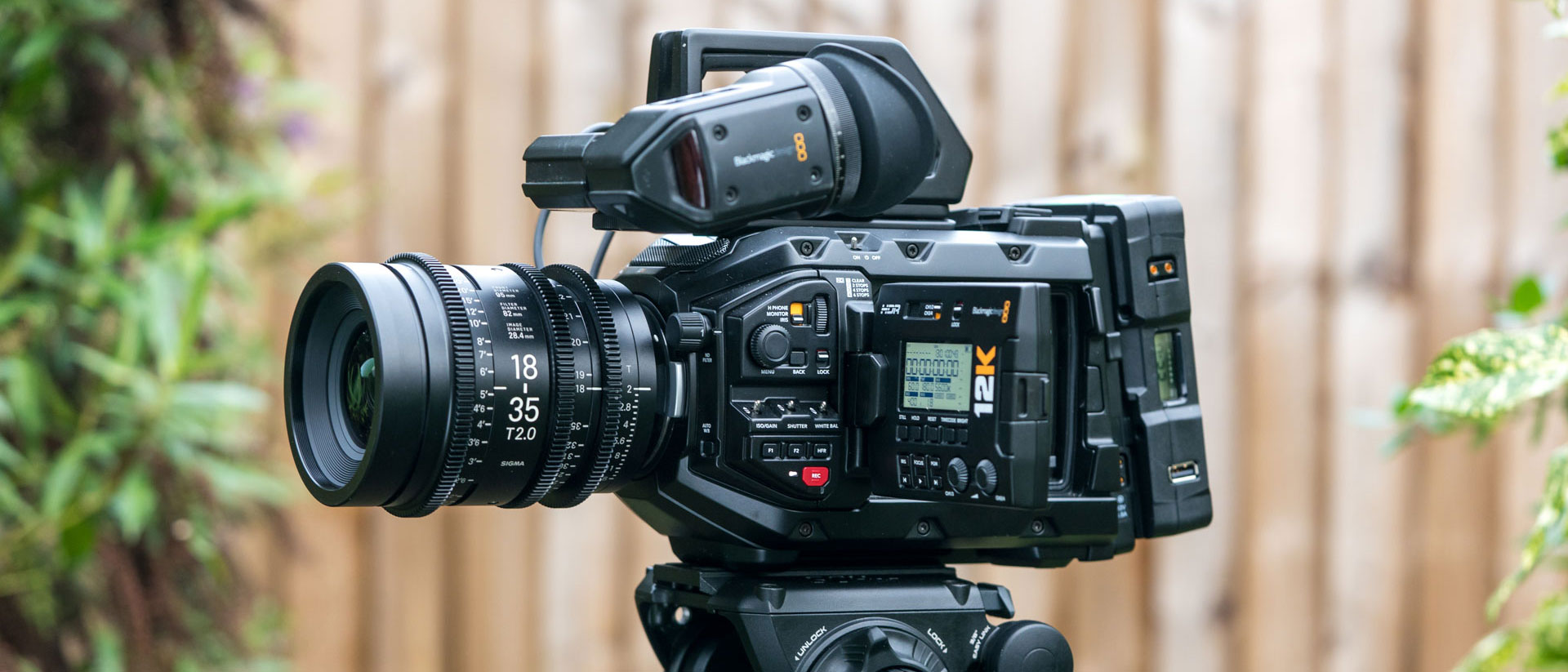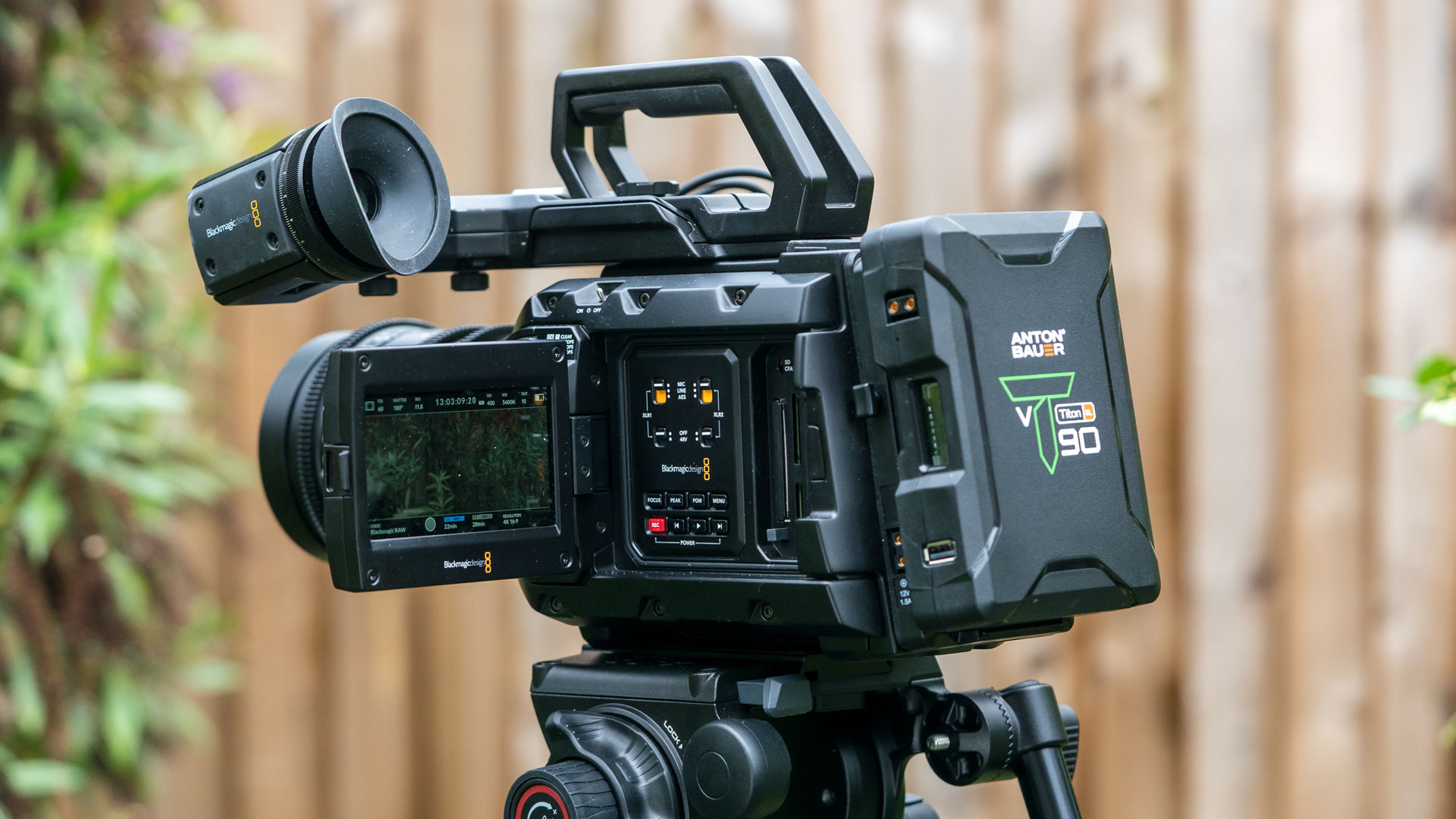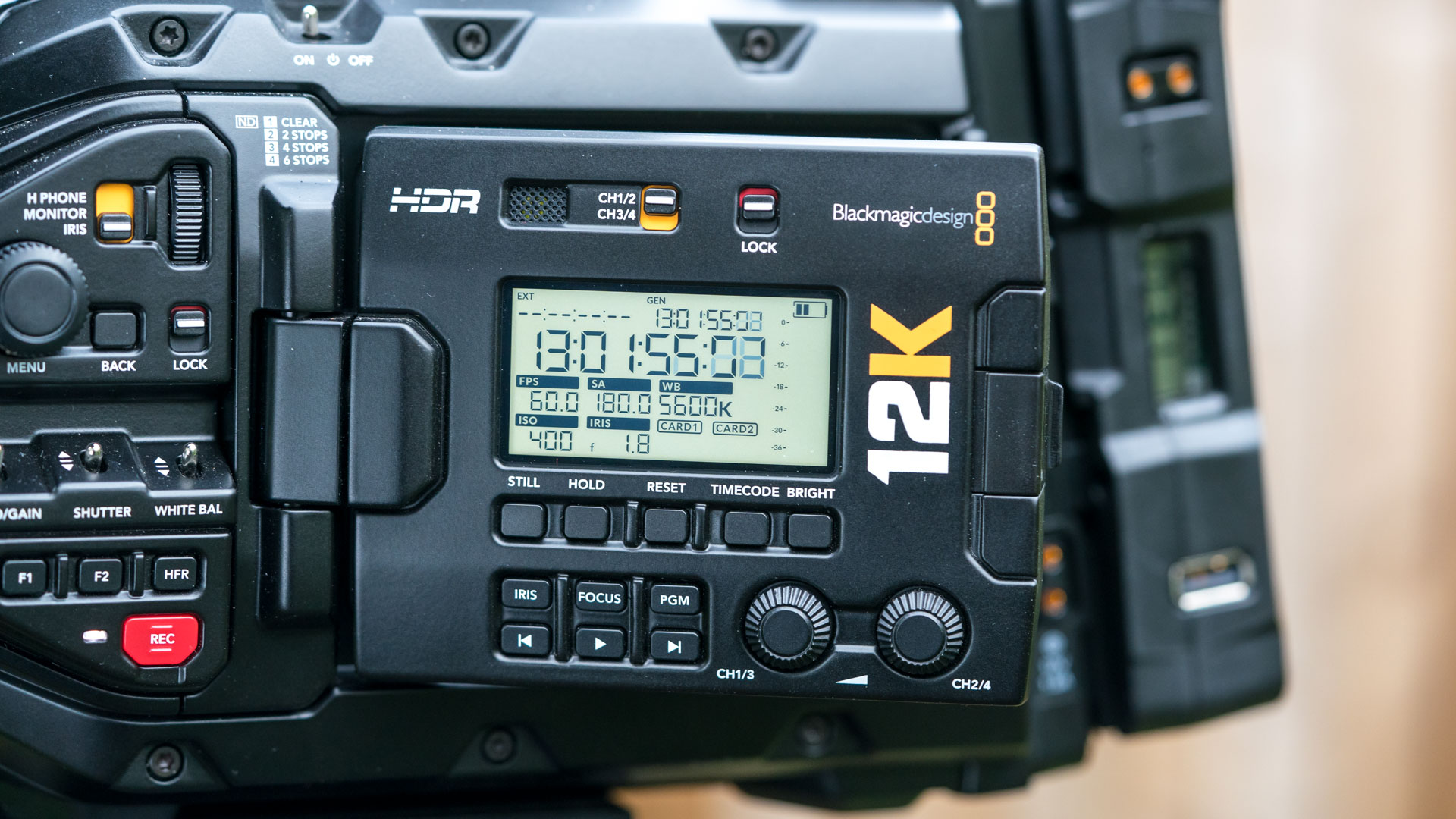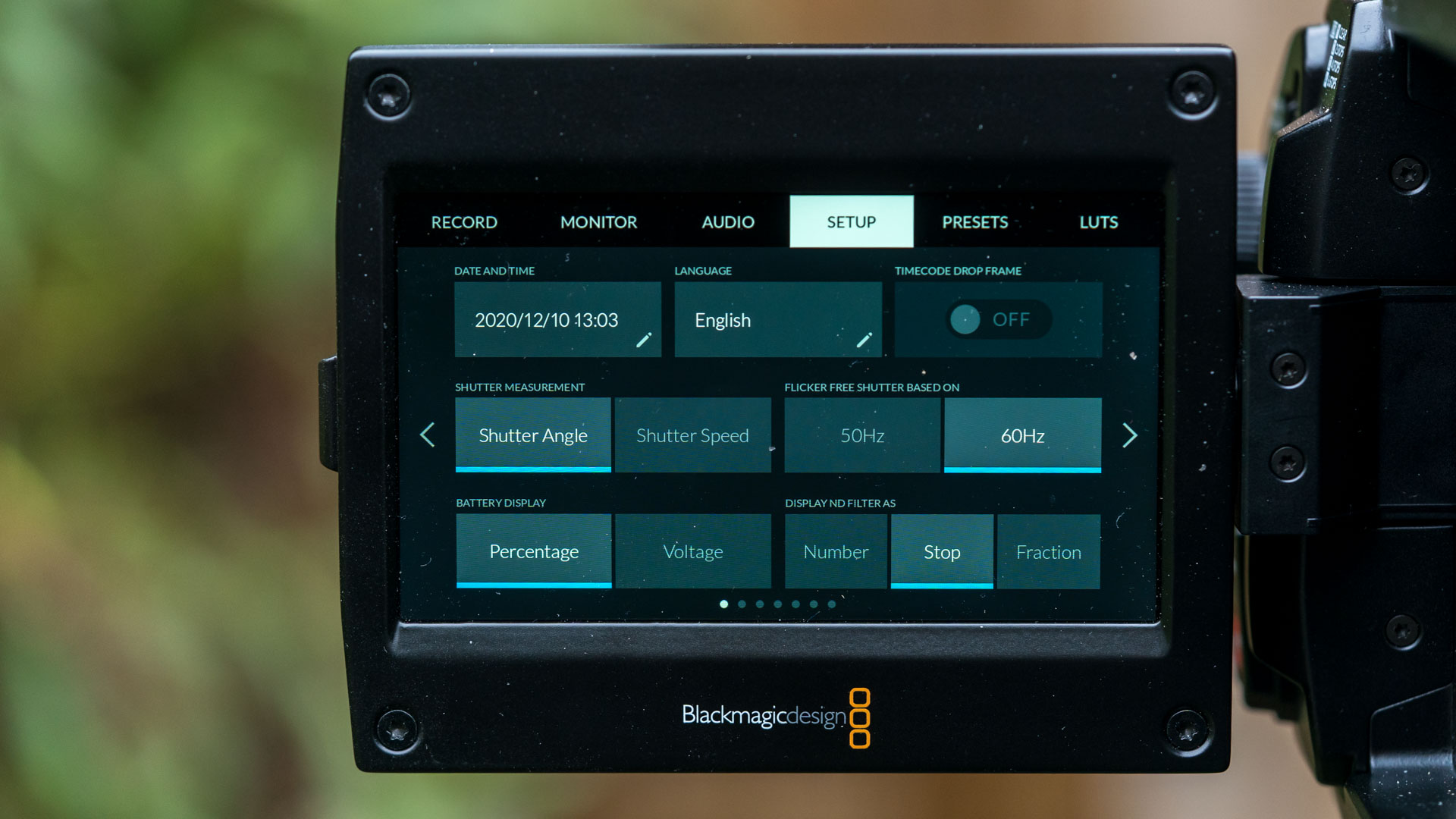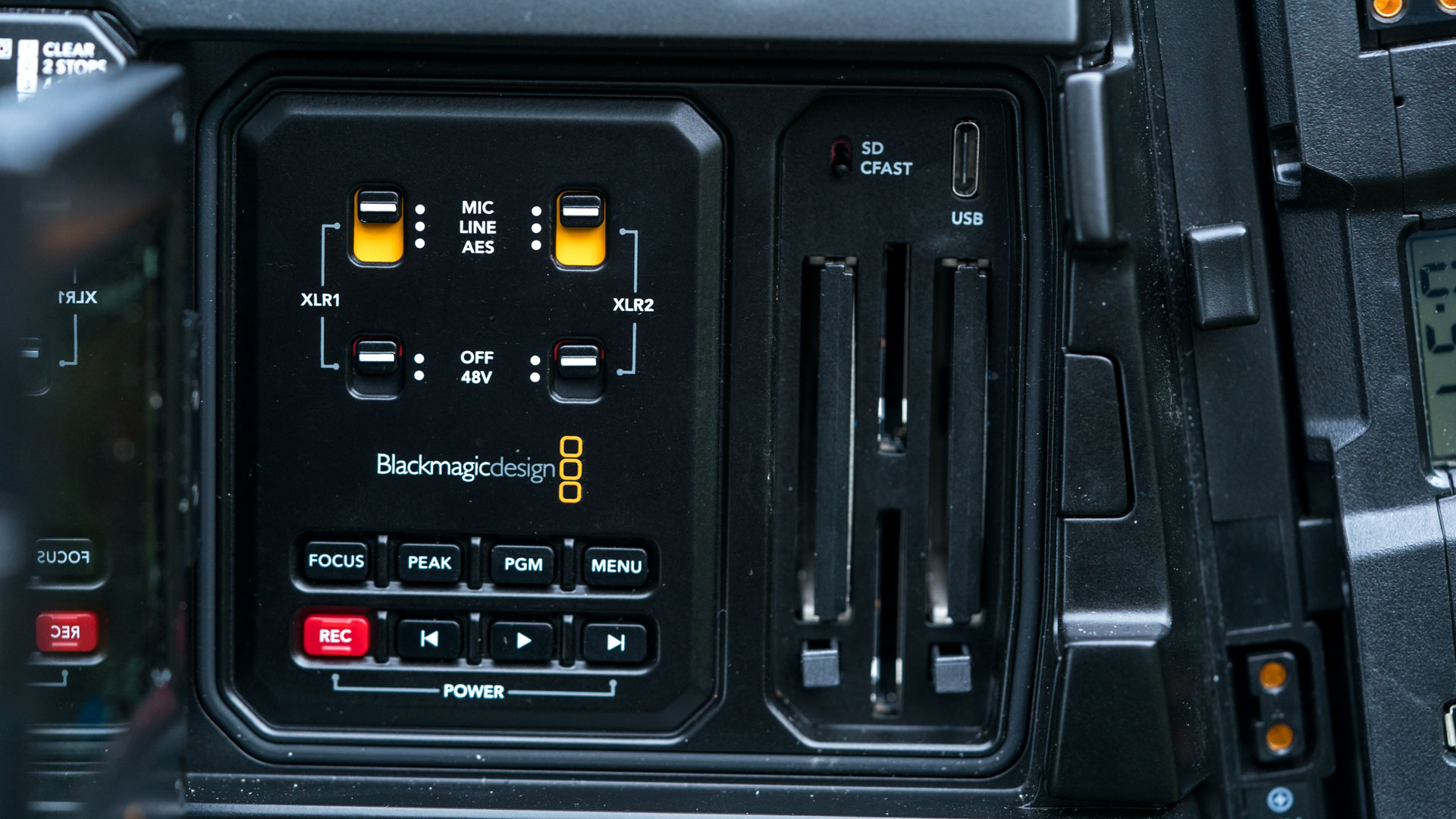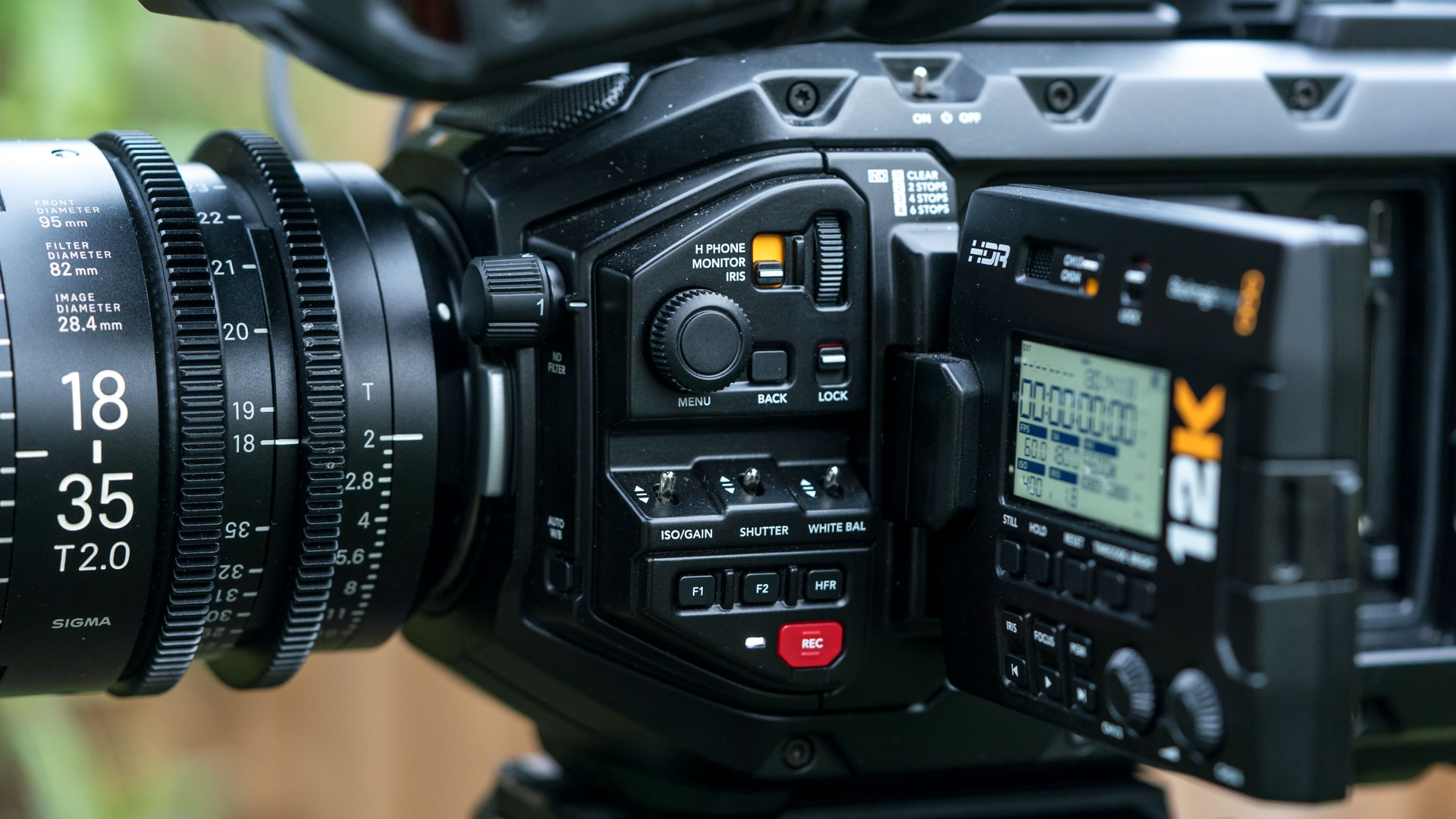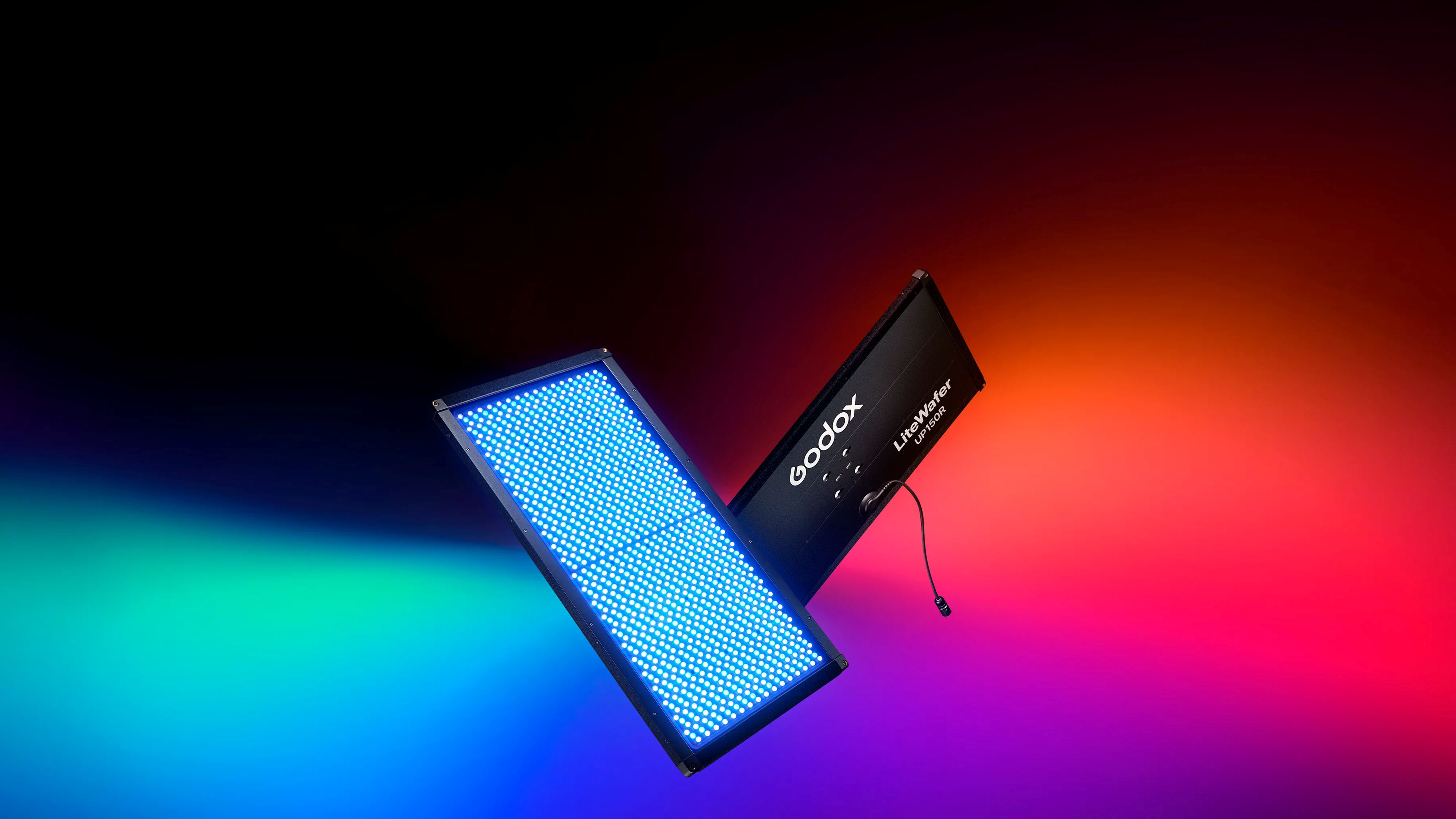Digital Camera World Verdict
If you really must have the bragging rights that comes with owning the highest-resolution video camera on the market, then the Blackmagic Ursa Mini Pro 12K is it. With a 79.6-megapixel CMOS sensor, it shoots 12K Blackmagic Raw files which give stunning quality with 14 stops of dynamic range and very filmic colours. Reduce it to a more reasonable 8K and 4K, and not only is the quality incredible, but you can shoot at fast frame rates that no other cameras can. But a camera is more than just its headline resolution and the Ursa Mini Pro 12K is based on the original Ursa Mini Pro launched almost four years ago and is starting to show its age. For example it has a Super35mm sensor, no IBIS, no codecs other than Raw, no continuous autofocus at all and certainly no phase-detection AF. It’s really a camera for experienced cinematographers shooting narrative drama such as feature films and VFX specialists rather than all-rounders.
Pros
- +
It shoots in 12K and nothing else does!
- +
8K and 4K are useful and beautifully filmic
- +
Built like a tank to last for years
Cons
- -
Super 35 not full-frame
- -
AF is very limited
- -
Only records in Blackmagic Raw
Why you can trust Digital Camera World
If bigger is better then the new Blackmagic Ursa Mini Pro 12K is the best of all as it shoots in 12K. However, the camera’s incredibly high resolution is almost a by-product of what the Aussie boffins at Blackmagic wanted to do. That was to make a camera capable of the very best 4K footage that has a very filmic look instead of looking too digital.
Of course, there are reasons to shoot in 12K, such as the enormous amount of scope for cropping if you are making a film in 4K or HD. It’s also good for extending the life of your footage for when 8K and above becomes the norm. And it’s ideal for VFX workers who want maximum resolution for green screen work.
While the fashion is for ever-larger sensors, Blackmagic found the best way for ultimate, filmic quality is to use a very high resolution 12K sensor in the smaller Super35mm CMOS size. This smaller sensor is packed with tiny photosites, which may not have the best high-ISO performance, but the highlight roll-off and colour gradation are much more organic and like film.
To get the look right, Blackmagic is involved in the three technical stages of capturing video. It makes its own sensors with its own technology; the camera records in the company’s own Blackmagic Raw format and this is processed and edited and graded in Blackmagic’s Da Vinci Resolve software. That is total integration that no other company has.
The sensor is CMOS but not using the typically Bayer formation which is biased towards green and requires that the colours have to be carefully combined for natural colour. Blackmagic’s new 12K sensor has equal sampling of red, green and blue for more balanced, film-like colours.
And the only option is to record in Blackmagic Raw using Log which is then edited in Da Vinci Resolve’s new fifth-generation colour technology.
Staying with Blackmagic technology all the way through the process is what gives the footage its detailed, filmic look.
The best camera deals, reviews, product advice, and unmissable photography news, direct to your inbox!
Specifications
Sensor: 79.6-megapixel, Super35mm, 27.03x14.25mm
Formats: 12K DCI 2.4:1 12,288x6480, 16:9 11,520x6480 and 7680x6408 anamorphic @ 72-578MBps; 8K DCI, 16:9 and anamorphic, 6K and 4K Super15, 4K DCI, 16:9, 2.4:1 and anamorphic.
Frame Rates: 23.98, 24, 25, 29.97, 30, 50, 59.94 and 60fps
High speed frame rates: Full sensor 12K 17:9 60fps, 8K and 4K 110fps. 2.4:1 8K and 4K 160fps, 6K Super16mm 120fps, 4K Super16mm 220fps
Codecs: Blackmagic Raw constant bitrate 5:1, 8:1,12:1, 18:1, constant quality Q0, Q1, Q3, Q5
ISO: 200-3200. Native ISO 800
Dynamic Range: 14 stops
Focus: One-shot autofocus on compatible lenses
Lens Mount: PL, optional EF or F
Screen: 4in LCD capacitive touchscreen
Audio: Integrated stereo microphones, 2x XLR inputs with phantom power support
Storage: 2x CFast 2.0 slots, 2 x SD UHS-II slots, USB-C 1 port
Dimensions (wxhxd): 23.37x15.04x14.91cm
Weight: 2.55kg
Key features
If you struggle to keep up with the speed of processing 4K files on your computer, and storing the vast amount of data on your hard drives and memory cards, then the idea of 12K recording might make you feel faint. And if you demand the absolute best results, shooting in 12K and dropping the resolution to 8K or 4K in post is the optimum, and it means you still retain the 12K files.
Just because the camera shoots in 12K doesn’t mean you have to, as you can record in 8K or 4K instead to save space on files. Shooting in camera in smaller sizes has the advantage of still using the whole area of the sensor and also unlocks higher frame rates.
Shooting from the full size of the sensor, you can record up to 17:9 in 12K at 60fps or 8K and 4K at 110fps. That’s shockingly impressive, and the smaller size sensor means rolling shutter is pretty well controlled too.
If you record in the 2.4:1 ratio, then it’s possible to shoot at 75fp in 12K and 160fps in 8K and 4K. If you crop the sensor to Super16mm size then you can record 6K at 120fps and 4K at 220fps, too. That’s a lot of options, although a Super16mm crop is quite severe.
This camera is all about incredible resolution and an organic, filmic look – especially in bright light. While some full-frame cameras can set ISO as high as 409,600, the Blackmagic seems like it’s stuck in the dark ages with an ISO range of just 200-3200. You don’t really want to venture much higher than ISO 800 or else noise starts to show. It can be reduced in post, as is the case with most footage shot in Log.
This isn’t really a camera for low light, and with its solid metal body and lack of decent AF, it’s certainly not for run-and-gun documentary filmmakers. It’s ideal for slow, considered work.
Build and handling
Apart from the 12K logo and the USB-C socket being moved to the back, the camera itself is identical to the old 4.6K Ursa Mini Pro G2. The body feels like it would take you through a warzone and back again, as it is very solid. At the back is a plate to take the big V-Lock style batteries. There is a good viewfinder for use on the shoulder, and the screen is bright for use on a tripod. And like all professional cinema cameras, there are lots of external buttons to access many of the main settings, or you can dive into the menus.
You do this via the touchscreen which is responsive and easy to understand. The menu system is easy to use with obvious tabs along the screen to let you select a group of settings. You just tap and swipe then adjust settings. To help you get your shots in perfect focus and exposed correctly there are displays for histogram, zebra, false colours and peaking.
The Ursa Mini Pro 12K has built-in ND filters with IR compensation, in 2, 4 and 6-stop range. The left of the camera has a second LCD screen which shows frame rate, shutter angle, aperture, white balance, ISO, iris, battery indicator, card recording status and audio meters. There are XLR audio connections, a 12G-SDI out connector, HD-SDI monitoring out, 2 LANC inputs, timecode in and reference input. That’s the sort of controls that experienced filmmakers like and have a use for.
But there is no image stabilisation, continuous AF or any codecs other than Raw which hinder it for more general use. It’s really made for use on a tripod, with manual-focus prime lenses. And with such high resolution, it really does demand the use of quality cine lenses rather than zooms or primes made for stills photography.
The camera comes with an Arri PL mount, but this is user-changeable. We used it with the optional Canon EF mount which just bolts right on without any need for shims or other faff. We tried a set of Canon CN-E cine primes and a Sigma full-frame cine zoom which were perfect for the job.
Performance
For best results, you should shoot at base ISO of 800 or under and expose to the right to allow lots of light in. Then the 12K camera gives not only incredible resolution but a dynamic range of 14 stops, with colours that are very filmic once the Raw files are processed. The 12-bit Raw files mean you can change ISO, white balance, sharpening and colours as much as you like to colour correct and grade properly. Some highlight recovery is needed, as it is definitely best to over expose and recover detail rather than under-expose which reveals shadow noise. Going up from ISO 800 reveals some noise which can be reduced in post production.
But this camera is all about stunning quality so really, it’s best with lots of light and low ISO shot in full 12K, which does give massive file sizes. These are recorded to C-Fast 2.0 cards or the very fastest V90-class SD cards, or you can also plug in a very fast SSD.
To reduce file sizes, Blackmagic Raw gives you a choice of compression levels of 5:1, 8:1,12:1 or 18:1 at a constant bitrate. Or to keep constant quality by varying the bitrate, then the options are Q0, Q1, Q3, Q5.
For the highest quality, then, constant bitrate 5:1 is the way to go. But it does gobble up memory space. We found a good balance was 8:1 or Q5 compression, as it was virtually impossible to detect any real difference in quality. In fact, all the settings give very film-like images with natural colours that are definitely different to other cameras on the market.
Verdict
If you demand the very highest resolution traditional video camera, never shoot in low light, control your camera manually, always use a tripod or steadicam, have the time to process your video Raw files in Da Vinci Resolve and have almost ten grand burning a hole in your pocket, then you’re going to love the burly Blackmagic Design Ursa Mini Pro 12K. And you’ll need to flash some more cash on memory cards and hard drives, as well as potentially upgrading your computer to edit the files.
If you don’t need 12K, then the camera’s little brother, the 4.6K Ursa Mini Pro offers the same experience and a wider choice of codecs and faster frame rates at a much lower price. You have to consider both of these as manual focus cameras with push-assist AF to help you focus on static subjects.
If you want modern phase-detection AF, impressive low-light performance, a full-frame sensor for an even shallower depth of field, image stabilisation, a choice of codecs and even live streaming potential, however, then there are other cinema cameras on the market that make more sense. And these are certainly more useable for run-and-gun style shooting. But, of course, nothing else shoots in 12K, or 8K at 110fps, in video Raw at any price.
Read more:
• Best cinema cameras
• Best cinema lenses
• Best video tripods
• Best laptops for video
• Best monitors for video
• Best video editing software
Adam Duckworth is an award-winning professional photographer and videographer based in the UK. He has worked for many top magazines, newspapers and corporate clients for more than 25 years. He was named SWPP UK Commercial Photographer of the Year, and is an Associate of the British Institute of Professional Photography. He has also worked for international publications like Motor Cycle News, Racer X, The Sunday Times, The Guardian, ZOO, Golf World, Today's Golfer, and Mountain Bike Action, among others.
